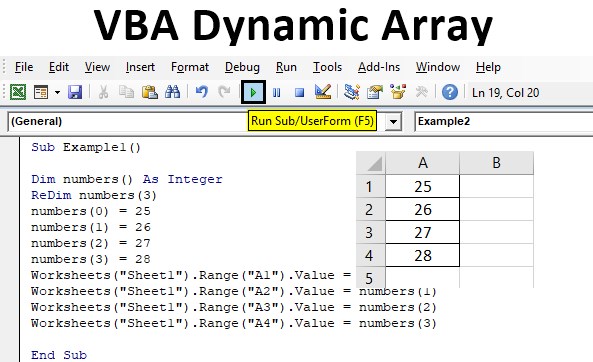

therefore, in VBA they have to call the Application.Transpose() on the Range object to pass it properly. VBA code: Transpose cells in one column based on unique values in another. HuiA,12345,HuiC,HuiF,HuiG,11:56:43 AM,F., With the following array formulas, you can extract the unique values and. You can use LBound(myarray) to determine whether the array index starts at 0 or 1. The following example transfers a 100-element array to a vertical worksheet range (A1:A100). VBA.Array) the array returned is always 0-based. You can use Excel's TRANSPOSE function to do this. However if you qualify it with the VBA library (i.e. Note: Once you get dynamic arrays, writing the Transpose function becomes super simple. The Array function returns a 0-based array if Option Base 0 (the default) is specified, or a 1-based array if Option Base 1 is specified. This way you can transpose without an array formula and also transpose without copying and pasting. Use the Transpose function to rotate data. Excel TRANSPOSE is a mathematical function to interchange the rows and. Use a static approach copy and paste as transpose. HuiA,12345,HuiC,HuiF,HuiG,-,11:56:43 AM,-,-,-,-,- Excel TRANSPOSE function returns the transpose of an array or matrix in Excel. The array is rotated in this way: the first row of the original array becomes the first column of the new array, the second row. Where array is the range of cells to transpose. switch the orientation of a given range from horizontal to vertical or vice versa. HuiA,12345,HuiC,HuiF,HuiG.Var_B.,11:56:43 AM.Var_B.,|07 JU,L 14|,JUL 14| The purpose of the TRANSPOSE function in Excel is to convert rows to columns, i.e. HuiA,12345,HuiC,HuiF,HuiG,Account numb,11:56:43 AM,oice Number,Date of,issue,of issue I've also played with the size of the output range and it makes no difference, though as far as I can see it shouldn't make any difference, ie if it's larger than the array it should just fill the 'empty' cells with #N/A, and if it's smaller the output would be truncated

The source file contains proprietary info so I can't share it, but any text file should suffice with a little bit of effort With Range(Cells(2, 1), Cells(UBound(myarray, 2) + 1, 1))Įnd WithThe vars are all strings except where other wise state, eg date/time Loop Until InStr(MyRecordIn, " END OF REPORT ") Or EOF(1)
TRANSPOSE AN ARRAY IN EXCEL VBA CODE
Offset(1).Resize(UBound(a, 2), UBound(a, 1)).Value = Application.Myarray(0, i) = Var_A & "," & Replace(Var_B, " ", "") & "," & Var_C & "," & Date & "," & Var_D & "," & Var_F & "," & Replace(Var_G, " ", "") & "," & Trim(Left(MyRecordIn, 20)) & "," & date2 & "," & Time & "," & Trim(Mid(MyRecordIn, 35, 12)) & "," & Trim(Mid(MyRecordIn, 48, 12)) & "," & Trim(Mid(MyRecordIn, 60, 7)) & "," & Trim(Mid(MyRecordIn, 67, 8)) & "," & Trim(Right(MyRecordIn, 9)) I did find that the code works if I do not Set tRangeArray and instead do Sheets ('sheet1').Range ('C12:C19).Value Application.Transpose (MyArray), but I'm not sure why that's different from my code. Resize(, UBound(title) + 1).Value = title MsgBox Me.TextBox1 & vbLf & vbLf & "Record Not Found" I have read up the help on transpose but dont understand. I = i + 1: ReDim Preserve a(1 To 18, 1 To i) Hi, Can anyone please advise why we use the above function with vba, i have seen that being used alot and i just want to know why its used in arrays alot. Range("a:r").Find(what:=res, lookat:=xlWhole, MatchCase:=False)įf = r.Address: ReDim Preserve a(1 To 18, 1 To i) Title = Array("Sr.No", "File#", "Client File#", "Client", "State", "Borrower's Name", "Date Received", "Date & Time File Started", "Title Ordered on", "Type of Search Ordered", "Title Follow up Date", "Title Received on", "File Completed on", "Date & Time E-Mail Sent to Client", "Status", "File Canceled Date", "Remarks", "Done by") Code Private Sub Searchbton_Click() 'Serach button clickĭim a(), r As Range, res, i As Long, ff As String, rng As Range


 0 kommentar(er)
0 kommentar(er)
